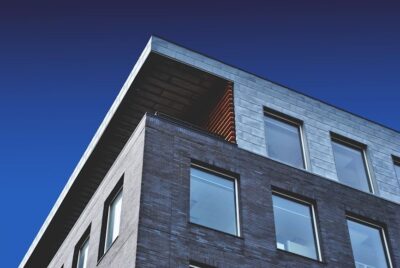“Out with the old, and in with the new” has always been the mantra for consumerism, a culture built on excess. Now that we know better, people are realizing that the method is no longer sustainable.
The unintended consequences are environmental degradation and the pressure to keep up with the Joneses. More mindful of the impact, some sectors are stepping up and doing better.
Commercial real estate, in particular, is shifting from building shiny new towers to giving forgotten buildings a second life. Adaptive reuse is rewriting the rules of development. Stylish, sustainable, and cost-effective, the approach is packed with ROI potential.
What Is Adaptive Reuse?
It may sound like a fancy term, but at its core, adaptive reuse is the process of repurposing older buildings for new uses instead of tearing them down.
Think warehouses turned into co-working spaces or heritage hotels reborn as boutique retail destinations. It’s a smart mix of preservation and innovation, maintaining character while meeting modern needs.
Yes, the technique plays on nostalgia. It’s also about revitalization, and breathing life into spaces that once powered communities. Adaptive reuse makes them relevant again in today’s economy.
Why It’s Gaining Ground
Sustainability at Its Heart
Adaptive reuse slashes construction waste, conserves resources, and reduces carbon footprints. The World Economic Forum (WEF) explains that the strategy reimagines cities by minimizing sprawl and cutting greenhouse gas emissions. It’s a win for developers, communities, and the planet.
Big ROI Potential
Developers love adaptive reuse because it delivers serious returns. Reimagined spaces often achieve higher occupancy rates and generate stronger ROI than new builds. Why? Tenants are drawn to unique architecture, prime locations, and the story behind the walls.
Affordability Without Compromise
Starting fresh with a new build can burn through budgets. Adaptive reuse keeps costs down while delivering upgrades that wow. Refreshed facades, modern interiors, and eco-friendly systems bring old properties into the present without breaking the bank.
Real-World Success Stories
Knoxville’s Revival Movement
Closer to home, Knoxville, TN, is buzzing with projects that give old properties fresh relevance.
The Burlington Center, a historic neighborhood gem, is undergoing restoration to transform it into a lively hub of community and commerce. Supporting these efforts, Knoxville’s Facade Improvement Program offers grants for exterior upgrades. Business owners can refresh aging storefronts and enhance their curb appeal.
Local Knoxville construction crews use pressure washing services as a first step in restoration. For this very reason, companies specializing in pressure washing in Knoxville are in high demand.
Besides getting rid of dirt and grime on exterior surfaces, commercial pressure washing is an eco-friendly solution, using only water for preventive maintenance.
PureClean Knoxville advises professional pressure washing, ensuring these revitalized properties shine as bright as their new futures.
Historic Gems with a New Chapter
Across the U.S., adaptive reuse projects are also making headlines.
In Butte, Montana, the restoration of the historic Music Hall is set to combine apartments and commercial space, preserving heritage while addressing housing needs.
Meanwhile, in Australia, a former empty site in Wagga is being reborn as a new retail store, transforming the local shopping landscape.
The Design Factor: Blending Old and New
Adaptive reuse is art. Designers play a key role in blending history with modernity.
Experts emphasize how adaptive reuse in heritage buildings creates modern commercial interiors that respect architectural integrity.
Think exposed brick walls, industrial beams, and sleek open layouts: Instagram-worthy spaces that also perform.
Challenges and How Developers Overcome Them
Of course, adaptive reuse isn’t a walk in the park. Structural surprises, zoning restrictions, and hidden costs can all pop up.
Yet, with careful planning and creative problem-solving, these hurdles are manageable. Developers are partnering with city governments, architects, and local communities to find solutions that work for everyone.
For example, public-private partnerships show that collaboration can offset costs and inspire a wave of investment in underutilized areas.
Why Adaptive Reuse Is the Future
The momentum is clear. Cities are under pressure to reduce emissions, meet housing demands, and reinvigorate communities without losing cultural identity.
Adaptive reuse checks all those boxes. It’s sustainable, profitable, and deeply human because it values history while shaping the future.
These projects don’t create buildings; they create stories. They tell of resilience, reinvention, and communities refusing to let their landmarks fade away.
The trend is fast becoming a movement reshaping commercial real estate worldwide. Whether it’s a Montana music hall or a Knoxville shopping center, these transformations prove that yesterday’s buildings can power tomorrow’s economy.
View the original article and our Inspiration here


Leave a Reply